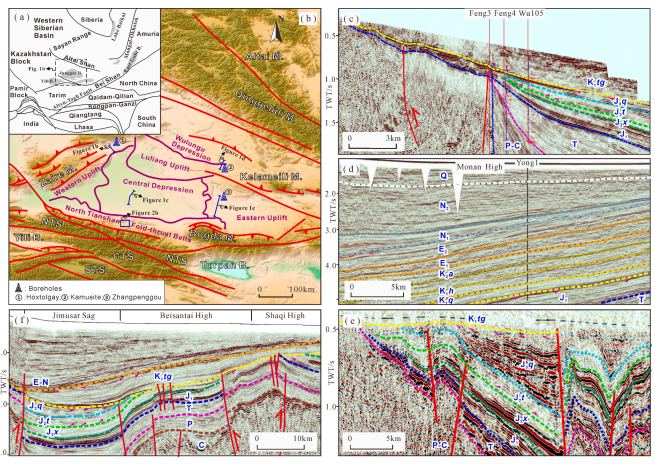中国西北准噶尔盆地晚中生代地层碎屑锆石U-Pb年代学研究:对喀喇昆仑-拉萨地块与欧亚大陆碰撞时限的启示

主题:Eurasiancontinent
类型:Drought
作者: Zhaojian Wu Xiaoyong Yang Saijun Sun Jiang Zhu Xiaowen Hu Xiaozhong Han Yifeng Cai Hui Ji
发布时间:None
类别: 地球科学
板内挤压变形作为板块碰撞事件的敏感标志,可以为板块边缘同期复杂的构造演化提供独特的区域视角。通过地震解释和地质剖面揭示了准噶尔盆地晚中侏罗世和晚侏罗世-早白垩世的两次区域板内变形和隆起事件,这两次事件都对应于沉积序列中的不整合面。选取准噶尔盆地东缘侏罗系和白垩系地层中的碎屑锆石进行LA-ICP MS U-Pb定年。结合以往的碎屑锆石U-Pb定年资料,在准噶尔盆地侏罗系-白垩系地层中发现了一组突出的、时间连续的同沉积碎屑锆石,它们在不整合面上下地层中的不连续分布限制了相应区域板内变形的精确时间分别为约166-157Ma和约151-129Ma,这与西藏南部的构造岩浆事件非常吻合。根据萨彦-西伯利亚造山带和天山-北山造山带磷灰石裂变径迹定年数据,我们认为准噶尔盆地及其周边区域陆内变形阶段与欧亚大陆南缘的挤压事件有关。其中,约166-157 Ma的第一阶段板内变形持续时间较短,强度较小,可能受喀喇昆仑-拉萨地块与南帕米尔地块碰撞的控制,约151-129 Ma的第二阶段板内形变持续时间较长,强度较大,可能意味着拉萨和羌塘碰撞的主要过程以及班公-怒江特提斯洋的最终完全闭合。